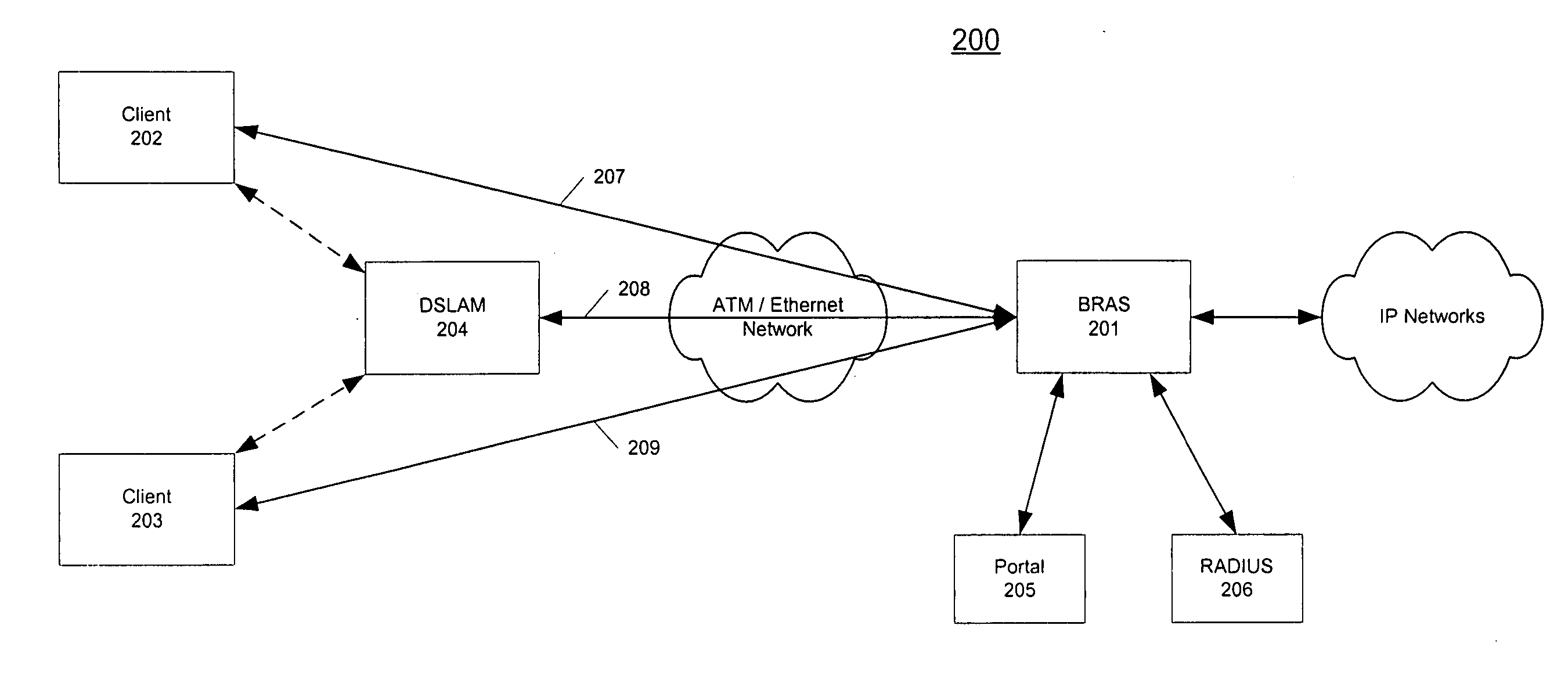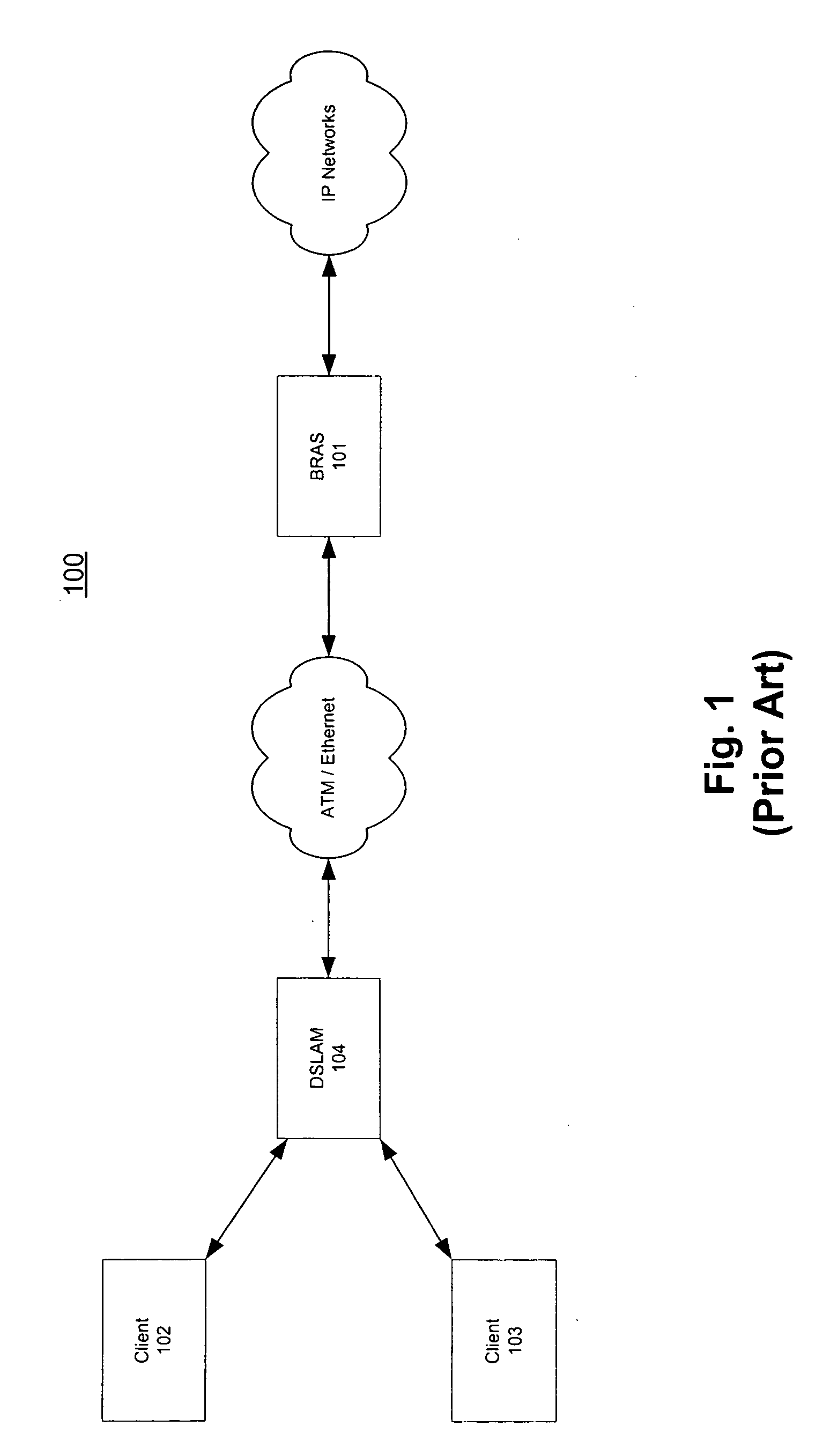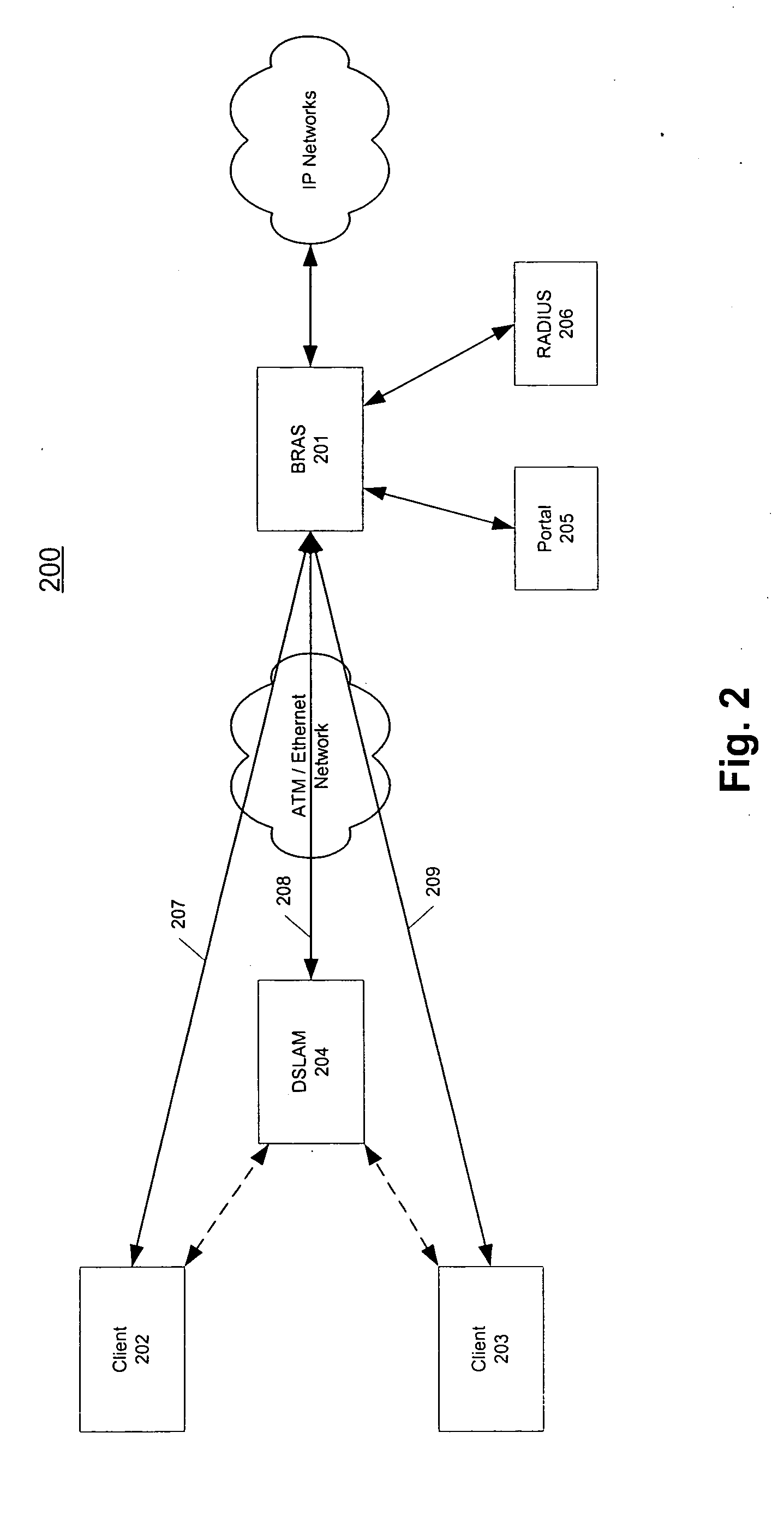Protocol for messaging between a centralized broadband remote aggregation server and other devices
a technology of remote aggregation server and protocol, applied in the field of communication, can solve the problem of large amount of duplicate packets sent to each dslam
- Summary
- Abstract
- Description
- Claims
- Application Information
AI Technical Summary
Benefits of technology
Problems solved by technology
Method used
Image
Examples
Embodiment Construction
[0019] Protocols for messaging between a BRAS and other entities are described. According to one embodiment, a BRAS can communicate information (e.g., multicast group membership and QoS profiles, etc.) to one or more entities downstream (e.g., DSLAM, home gateways, etc.) and / or one or more different types of entities downstream of BRAS can communicate information (e.g., subscriber records, such as port sync, VCI / VPN values, and / or NAPT mappings) with the BRAS. According to one embodiment, the protocols allow a BRAS to transmit one copy of each data packet to each DSLAM requested by the subscribers and to enable the DSLAMs replicate the packet to all subscribers who tune in (e.g., multicast replication is pushed out from the BRAS to the DSLAM). According to another embodiment, the protocols enable DSLAMs to be session aware. An exemplary function built on this capability is to make VOIP packets have higher precedence over other packets from the DSLAMs toward the BRAS.
[0020] Accordin...
PUM
 Login to View More
Login to View More Abstract
Description
Claims
Application Information
 Login to View More
Login to View More - R&D
- Intellectual Property
- Life Sciences
- Materials
- Tech Scout
- Unparalleled Data Quality
- Higher Quality Content
- 60% Fewer Hallucinations
Browse by: Latest US Patents, China's latest patents, Technical Efficacy Thesaurus, Application Domain, Technology Topic, Popular Technical Reports.
© 2025 PatSnap. All rights reserved.Legal|Privacy policy|Modern Slavery Act Transparency Statement|Sitemap|About US| Contact US: help@patsnap.com



